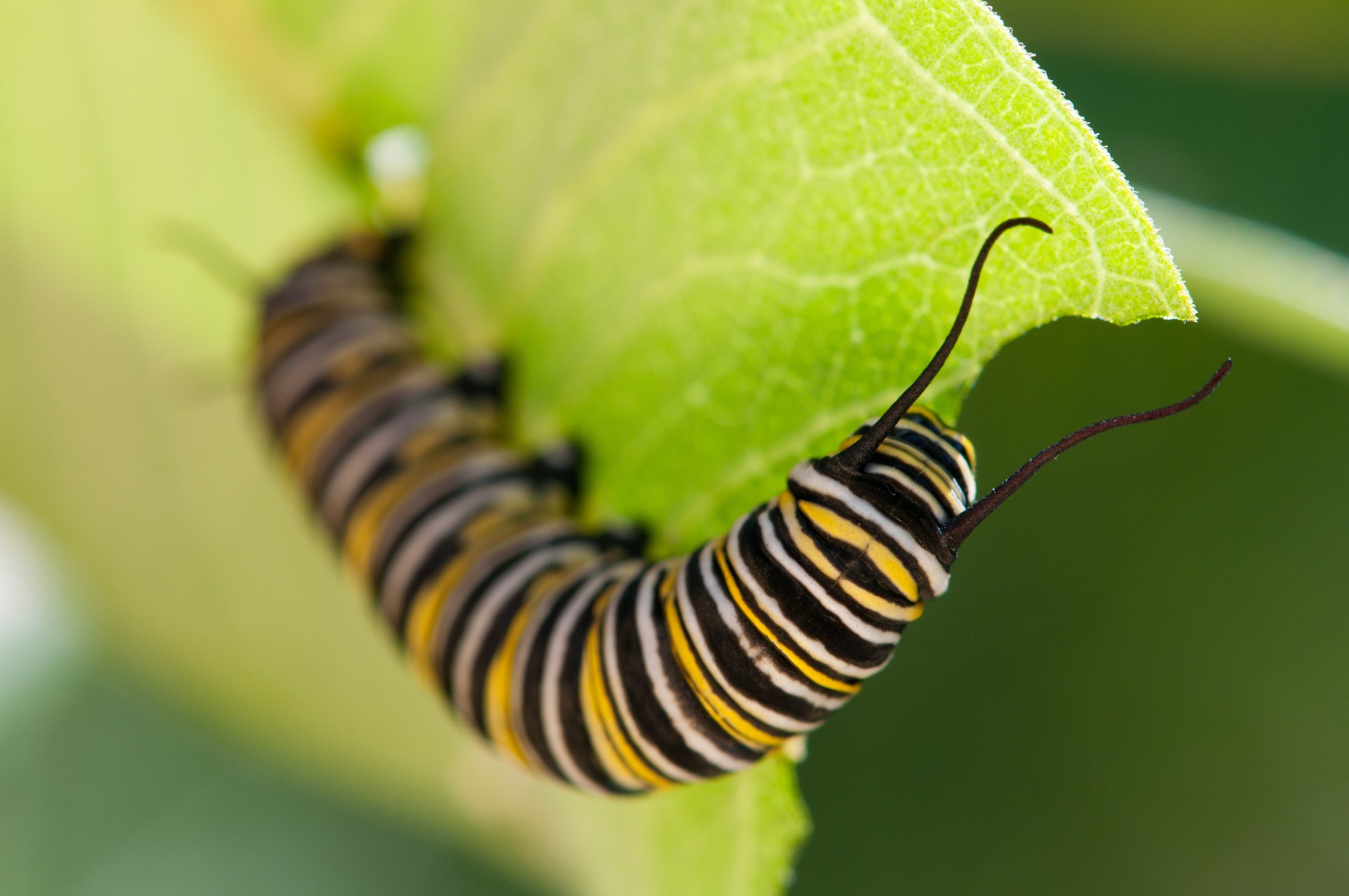
Some plants can hear caterpillars eating leaves and respond by emitting caterpillar-repelling chemicals, according to a new study published in the journal Oecologia.
Scientists have known that certain plants respond to sound vibrations—corn roots, for example, lean toward vibrations of a specific frequency—but until now it hasn’t been clear why they’re able to do so. In this experiment, researchers from University of Missouri exposed one set of plants to a recording of caterpillars eating plants and found they emitted more of the anti-caterpillar chemical and did it more quickly than the plants that weren’t exposed to the sound.
The researchers also found that background noise like wind or insects had no impact on the plants, indicating that the plants could distinguish the sound of their attackers.
Now the researchers are looking for the “ears” of the plants that allow them to hear, though they suspect they take the form of proteins known as “mechanoreceptors” found in plants and animals that respond to pressure.
More Must-Reads from TIME
- Donald Trump Is TIME's 2024 Person of the Year
- Why We Chose Trump as Person of the Year
- Is Intermittent Fasting Good or Bad for You?
- The 100 Must-Read Books of 2024
- The 20 Best Christmas TV Episodes
- Column: If Optimism Feels Ridiculous Now, Try Hope
- The Future of Climate Action Is Trade Policy
- Merle Bombardieri Is Helping People Make the Baby Decision
Write to Noah Rayman at noah.rayman@time.com